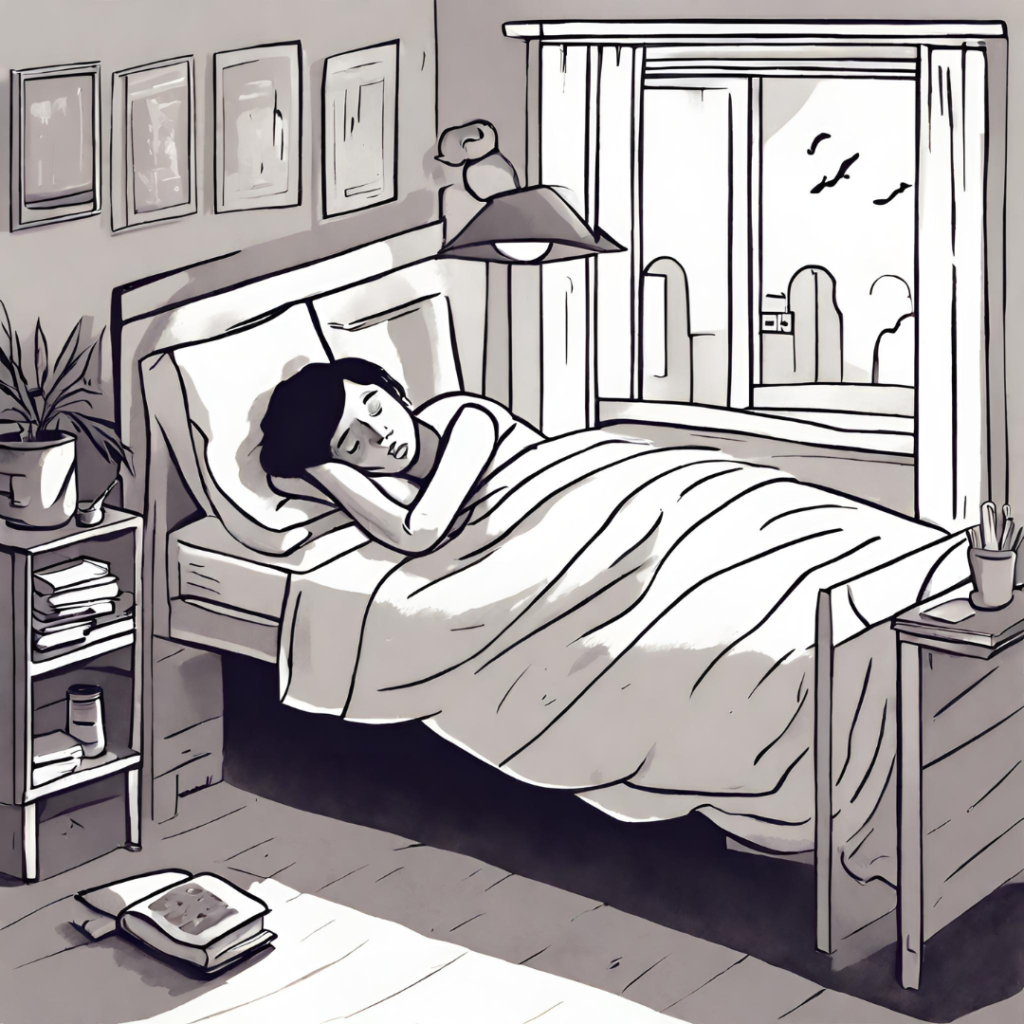In our relentless pursuit of personal growth and overcoming obstacles, we often encounter challenges that test our resilience and creativity. The daily grind of work-related stress and the quest for enhanced productivity can sometimes seem insurmountable. However, there’s a surprising and often overlooked tool in our arsenal—napping. This article will delve into napping strategies for personal challenges and how they can aid us in our journey towards self-improvement.
The Science of Napping: A Tool for Personal Growth
Understanding the science behind napping is crucial in appreciating its role in overcoming personal challenges. Far from being a sign of laziness, napping is a well-established practice, supported by our biological rhythms. Our sleep-wake cycle includes various stages, such as light sleep and rapid eye movement (REM) sleep, each playing a crucial role in maintaining our well-being. Napping, when aligned with these cycles, can provide numerous benefits depending on its length and type.
There are two main types of naps:
- Power Naps for Quick Energy Boosts: These brief naps, typically lasting 10 to 20 minutes, provide a quick energy boost and increased alertness without the grogginess of longer naps. Harnessing naps for overcoming obstacles often involves utilizing these power naps as a shot of espresso for your brain.
- Full-Length Naps for Comprehensive Benefits: Longer naps, ranging from 60 to 90 minutes, encompass an entire sleep cycle, including REM sleep. These naps offer extensive cognitive benefits, such as improved memory and creativity, making them ideal for nap-induced resilience in personal growth.
Addressing Personal Challenges with Napping
When exploring how napping can address personal challenges, it’s important to recognize common obstacles we face. Stress, a ubiquitous adversary in our fast-paced lives, can significantly impact our mental and physical health. If left unchecked, it can hinder our personal growth, leading to burnout and decreased productivity. This is where napping as a tool for stress management becomes invaluable.
A well-timed nap can be a powerful stress management tool. It promotes relaxation and helps reduce cortisol levels, the stress hormone. Even a short power nap can reset your stress levels, leaving you more composed and ready to face challenges with a clearer mind. Studies have shown that regular napping leads to decreased stress and increased resilience over time.
Practical Tips for Incorporating Naps into Your Routine
So, how can you harness the stress-reducing benefits of napping in your daily life? The next section will explore practical tips for incorporating naps into your routine to effectively manage stress. Remember, it’s not about escaping your problems but providing your mind and body with a much-needed break.

Boosting Creativity and Problem-Solving with Napping
Personal growth often requires honing our creative and problem-solving abilities. In many fields, from art to entrepreneurship, tapping into creativity is key. Here, napping can be an unexpected ally. Studies have indicated that napping, particularly full-length naps that include REM sleep, can significantly enhance creativity. This creative boost through power napping allows the brain to engage in complex problem-solving and memory consolidation, offering fresh insights when you wake. So next time you’re facing a creative block or a complex problem, consider a strategic nap to rejuvenate your thinking.
Enhancing Productivity with Strategic Napping
Productivity is central to personal growth, whether you’re aiming to excel in your career, complete a challenging project, or manage daily tasks efficiently. Fatigue and tiredness can be major productivity killers, but napping can be your secret weapon. A well-timed nap can refresh your mind, increase alertness, and improve concentration, thereby enhancing productivity with strategic napping. To maximize the benefits of napping for productivity, it’s important to create a conducive environment and experiment with nap lengths to find what works best for you.
Overcoming the Stigma Around Napping
Despite its numerous benefits, napping still faces stigma. It’s often mistakenly associated with laziness or a lack of ambition. To fully embrace napping as a tool for personal growth, addressing this stigma is crucial. Sharing personal success stories and citing scientific research on napping can help change perceptions. Educating others about how harnessing naps for overcoming obstacles has helped you can shift the narrative, promoting a more nap-positive culture.
Finding the Right Balance with Napping
As beneficial as napping can be, it’s important to strike the right balance. Napping should complement, not replace, a good night’s sleep. To find the right balance for nap-induced resilience in personal growth, consider experimenting with different nap durations. Be mindful of your natural circadian rhythm and choose nap times that align with your energy dips. Combining napping with other relaxation techniques, like meditation, can further enhance its restorative benefits.
Conclusion: Embracing Napping for Personal Challenges
In our quest for personal development, napping emerges as a powerful tool to overcome challenges and unlock our full potential. It offers benefits like stress reduction, enhanced creativity, and improved productivity, aligning with our natural sleep cycles. As you navigate your path to personal growth, consider embracing the art of napping. Experiment with nap durations and timings to discover how this simple practice can aid you in overcoming personal challenges and achieving your goals.


